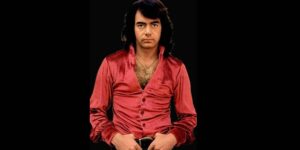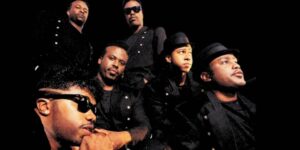The 1990s was a decade of great turmoil and change, marked by the rise and fall of empires, the dawn of new technologies, and a radical shift in music. It was the decade when alternative rock went mainstream, techno and house music redefined electronic dance music, and hip-hop came of age as a pop force. The 90’s music revolutionized the pop industry, paving the way for the diverse array of genres that dominate the charts today. In this article, we’ll explore the music of the decade and how it shaped the sound of pop for years to come.
The Death of Hair Metal
The 90’s began on a sour note with the decline of hair metal, a flamboyant subgenre that exploded in the 1980’s with bands like Poison and Bon Jovi dominating the airwaves. Gone were the excessive guitar solos, big-hairdos, and power-ballads that defined the sound. In its place, a new movement emerged, influenced by the raw, grunge sound of bands like Pearl Jam and Nirvana.
Alternative Rock Reigns Supreme
It was only a matter of time before alternative rock, a scene that had gained momentum in the mid-90’s, took over. Bands like Radiohead, Oasis, and Blur led the charge with their introspective and experimental sound. Alt-rock gave birth to a wave of new fanatics, who swapped their mosh-pitting, testosterone-fueled club nights for guitar-driven, introspective ballads like Nirvana’s ‘Smells Like Teen Spirit’ and Oasis’s ‘Champagne Supernova.’ The genre’s focus on musicality and lyrical depth challenged the status quo of sugary-pop and glam rock, paving the way for a new breed of artists unafraid to be different.
Electronic and Dance Revolutions
The decade also saw an explosive growth of electronic and dance music, characterized by the acid house and techno genres. Tracks like Daft Punk’s ‘Homework’ and Aphex Twin’s ‘Selected Ambient Works’ marked a new era of creative experimentation with music production. Acts like Beck, Moby, and Missy Elliott pioneered the fusion of disparate styles, incorporating dance beats with hip-hop and rock sensibilities to create a new vocabulary of sounds and ideas.
Hip-Hop’s Cultural Impact
1990 also marked the beginning of the hip-hop era, with Ice Cube and the Wu-Tang Clan bursting onto the scene, along with legends like Tupac Shakur and The Notorious B.I.G.. Hip-hop would go on to become a dominant force, with commercial success and critical acclaim transcending party lines and demographics alike. Hits like ‘Regulate’ from Warren G, ‘Bust a Move’ by Young MC, and DJ Shadow’s magnum opus, ‘Endtroducing,’ solidified its place among the decade’s most popular and influential movements.
Pop Meets Folk
The rise of pop met folk in the latter half of the decade, with acts like the Spice Girls, Backstreet Boys, and Britney Spears dominating the charts with catchy anthems and sugary hooks. Music festivals like Lollapalooza and Woodstock brought eclectic lineups that incorporated folk into the mix. Artists such as Jewel, Natalie Imbruglia, and Bush’s Matt Malley merged pop songwriting with folk-influenced song structures, creating timeless hits with relatable lyrics and simple, repetitive melodies.
Regional Sounds
The 1990s also became a decade of regional styles, with geographically specific trends emerging:
- Texan psych-rock and country-indie got a boost thanks to Arcade Fire, Spoon, and the Ataris.
- The Pacific North West (PNW) scene propelled bands like Nirvana, Pearl Jam, and Soundgarden onto the national consciousness.
- The underground club nights of New York City paved the way for new wave and post-punk revival by acts like Interpol, The White Stripes, and Bright Eyes
Conclusion
As the 20th century drew to a close, popular music had undergone significant transformations since the dawn of the 90’s. 90’s music can be recalled as a decade when alternative rocked the mainstream, electronica diversified the dance floor, hip-hop brought cultural relevance to an international arena, and pop met folk in explosive fusion. The legacies created during this period left an irreparable mark, shaping popular music’s trajectory ever since.
Frequently Asked Questions
Is 90’s Music making a comeback in current charts?
Yes and no. While mainstream pop can be influenced by older styles or revivals of past styles, the 1990s weren’t a period of strictly nostalgic music. Their impact lingered, influencing production, musicianship, and lyricism.
What inspired the rise of female artists in the music scene?
Partly due to MTV’s Music Television, allowing women from various genres and backgrounds the platform to showcase talent. Girl power anthems like Spice Girls ‘Wannabe’ and Dixie Chicks ‘Fly’ resonated with a gender-diverse youth.
Could the Internet have enhanced the 90’s music scene without the rise of major streaming platforms? Do you think it altered the perception of music?
Yes; the Internet, early social networking, and file sharing allowed lesser-known artists to create and share independently, bypassing traditional industries. This fragmentation led to a more scattered, niche-music landscape while also propelling the rise of unsigned artists and more experimental sounds. While streaming increased accessibility, it created new channels for discovery, yet sometimes homogeneized the sound pool.
In conclusion, the music landscape of the 1990s was groundbreaking, with iconic artists, genres, and styles forming the foundation of modern music.






